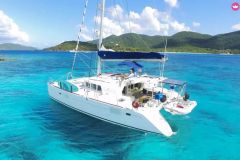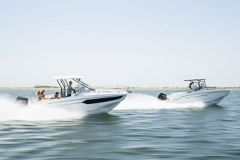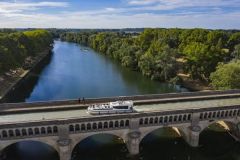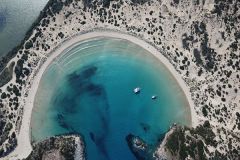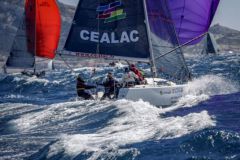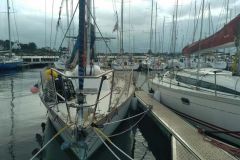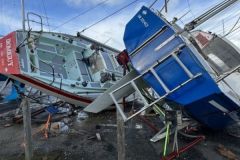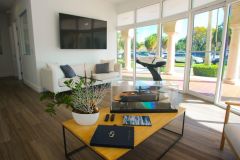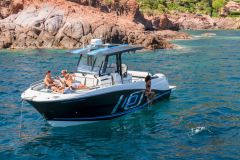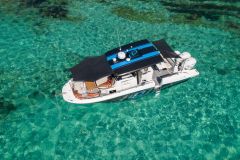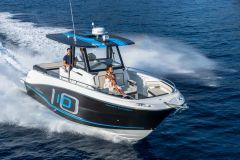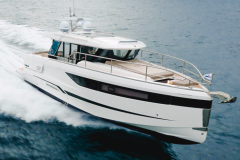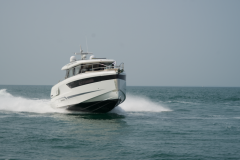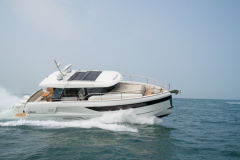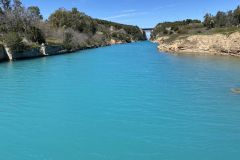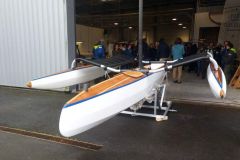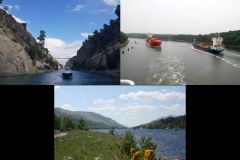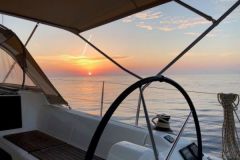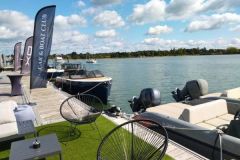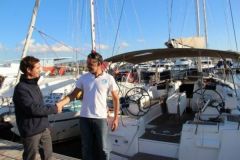The boat rental company Fastsailling.gr organises performance training courses in Greece twice a year. This is an opportunity to gain additional experience by pushing boats and crews.
We have criss-crossed the Aegean Sea with the 3 Pogo 12.50 engaged in this training. On board each of the boats, a mixed and cosmopolitan crew of five trainees supervised by a professional skipper experienced in offshore navigation.
On one of the stages, we experienced particularly strong wind conditions. The files announced gusts to 45 knots but our three boats had to deal with a Meltem sometimes blowing at over 60 knots.
In rough weather, not all sailboats are equal
Not all boats certified in category A are able to withstand this type of weather in safety. In this case, the Pogo 12.50 comes from Class 40 and offers great shape stability thanks to its width.
Place the boat in the wave
In addition, the boat is sufficiently responsive and precise enough to allow the helmsman to place the boat in the wave as he wishes. That is, to go down the swell with a little angle so as not to go straight into the next wave.
Have the right speed
To navigate in good conditions of safety, it is necessary to be able to adapt its speed to those of the waves. Too fast and straight ahead, we will catch up and crash into the next wave, tiring the equipment and taking the risk of sanctifying ourselves.
Not fast enough, we suffer the sea and the helmsman is beaten by the waves at the risk of going down or down.
Our sail left the boat balanced with 3 reefs for the mainsail and a staysail.
This allowed a speed of at least 12 knots, knowing that in surfing, the boat often reaches 20 knots.
And in the biggest ones rafales??
The average wind was 45/50 knots. In gusts reaching 60 knots, you have to be able to drop 10/15 degrees to keep an apparent tailwind despite the increase in speed. The risk would be to take too much heel and lose control of the boat.
Priority to safety
The notion of bad weather is very subjective. It depends on the boat, the crew's experience and the sea state. But with regard to the safety of women and men on deck, some points are invariable.
- Consider each trip as dangerous.
- Ensure that the crew is able to manoeuvre if necessary.
- The vest checked and adjusted to its size, the harness and the caped lanyard are essential.
- Dress for bad weather with effective clothing so as not to be prostrate by the cold.
- Keep water and food close at hand.
A boat ready to go!
- Stow, stow, stow, moor everything that can fly inside and also outside.
- The boat must have anchorage points at the bottom of the cockpit for the harness loops.
- Ensure that the boat is able to sail in these conditions (equipment maintenance, number of reefs, staysail, but also shape stability of the boat)








